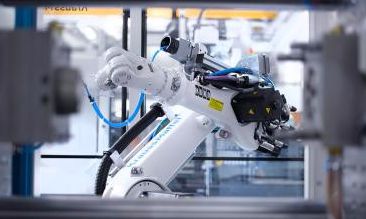
2. The degree of freedom of the robot The degree of freedom of the robot is also the number of axes of the robot. The more the number of axes is, the higher the degree of freedom of the robot is, the more flexible the robot is, and the actions that can be performed can be more complicated. If only for simple pick and place placement, a four-axis robot is enough to do the job. However, if the specific work is done in a relatively narrow space, then the robot needs to have a great flexibility, so the six-axis robot is a good choice. In theory, the greater the number of axes, the greater the flexibility. However, the more the number of axes, the more complicated the programming work that needs to be done. This depends on the specific work. 3. Robot load The load of the robot determines the maximum weight the robot can carry during operation. You need to have an understanding of the weight of the accessories on your production line, and then choose the right weight. 4. Maximum range of motion Each industrial robot has the largest range of motion and the longest distance it can reach. At this time, it needs to consider whether its range of motion meets its own needs. 5. Speed ​​In general, the maximum speed is given in the details table. High-speed robots are more efficient and theoretically shorter. 6. Repeated Positioning Accuracy This parameter directly reflects the accuracy of the robot. Once the robot repeats a motion, there will be an error when it reaches a position. The higher the precision is, the smaller the robot error is, and the general robot error is within ±0.5 mm. Your application requires very high precision, so this data needs to be emphasized; if the application's accuracy is not high enough, there is no need to choose a product with very high repeatability. 7. Moment of inertia The moment of inertia of the robot detail table and the allowable torque of each axis have a very important influence on the safe operation of the robot. If the application has certain requirements on the torque, it is necessary to carefully check whether the torque of each axis is satisfied if overloaded. It may cause the robot to malfunction. 8. Degree of protection If the environment in which the robot is used has dust or water that will affect the operation of the robot, then it is important to study the robot's protection level. Different robots have different suitability for various environments. See this condition. , choose a robot with a working environment.
SFP (Small Form-factor Pluggable) can be simply understood as an upgraded version of GBIC. GBIC (abbreviation for Gigabit Interface Converter) is an interface device that converts gigabit electrical signals into optical signals. GBIC is designed to be hot-swappable. GBIC is an interchangeable product that meets international standards. Gigabit switches designed with GBIC interfaces have a large market share due to flexible interchangeability.
GBIC modules are divided into two categories: one is the GBIC module used by ordinary cascade to realize the ordinary connection with other switches; the other is the stack dedicated GBIC module to realize the redundant connection with other switches.
GBIC was basically replaced by SFP for the following reasons:
SFP (Small Form-factor Pluggables) can be simply understood as an upgraded version of GBIC.
SFP module (the volume is reduced by half compared to the GBIC module, and the number of ports can be more than doubled on the same panel.
Because the SFP module is basically the same as GBIC in function, it is also called Mini-GBIC (Mini-GBIC) by some switch manufacturers.
The SFP module further compresses the size and power consumption by putting CDR and electric dispersion compensation outside the module. Used in optical communication applications in telecommunications and data communications. SFP connects the motherboard and optical fiber or UTP cable of network equipment such as switches, routers and other equipment. SFP is an industrial specification supported by some fiber optic component providers.
SFP supports SONET, Gigabit Ethernet, Fiber Channel and some other communication standards. This standard is extended to SFP+, which can support 10.0 Gbit/s transmission rate, including 8 gigabit Fibre Channel and 10GbE. Introduced the optical fiber and copper core version of the SFP+ module version. Compared with the Xenpak, X2 or XFP version of the module, the SFP+ module keeps part of the circuit on the main board instead of the module.
Sfp Module,Epon Sfp,Gpon Sfp
Shenzhen GL-COM Technology CO.,LTD. , https://www.szglcom.com